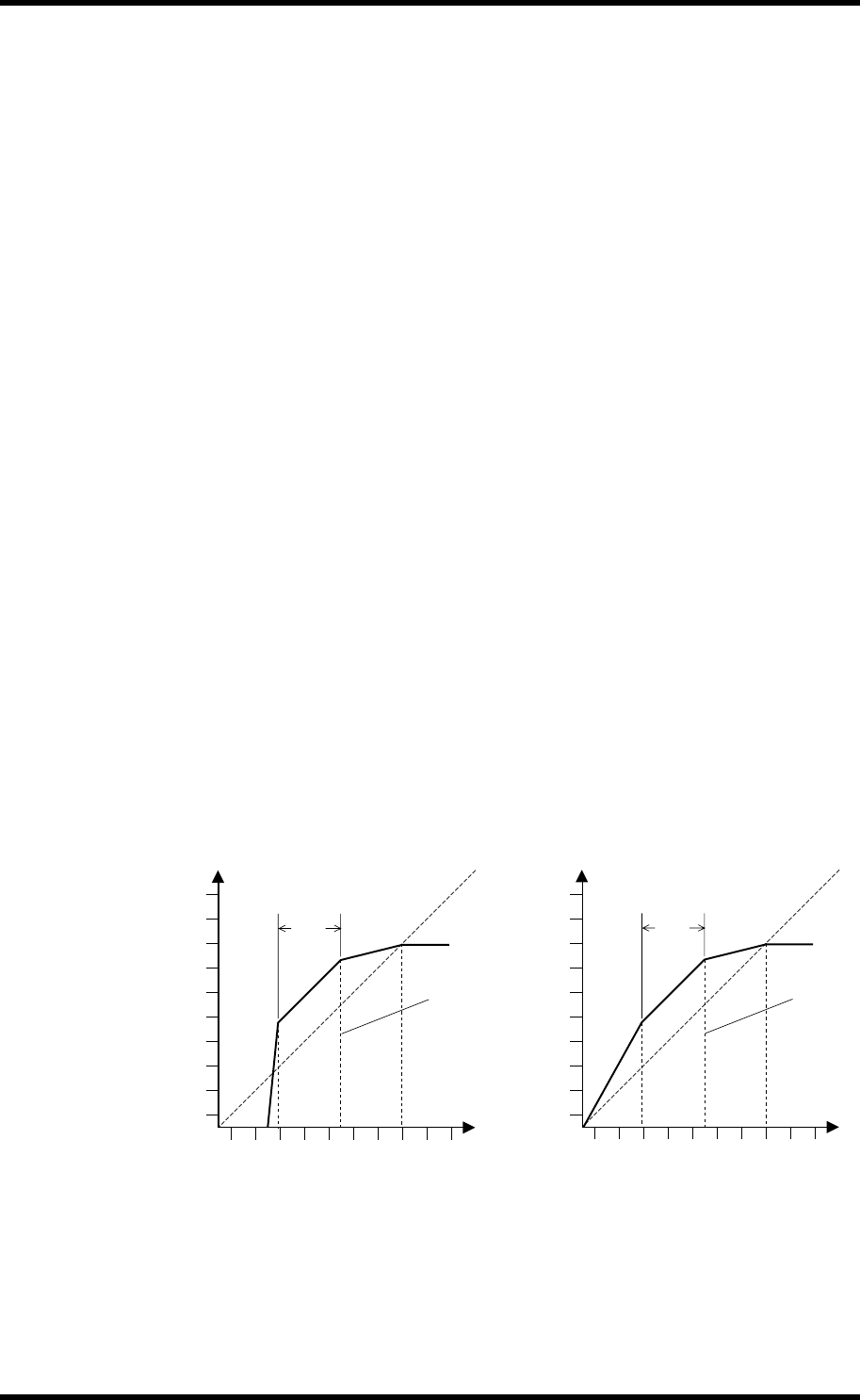
Processor Types 171
01V—Owner’s Manual
OUT GAIN—This sets the expander’s output signal level, and can be used to compen-
sate for the overall level change caused by the expansion process.
KNEE—This determines how expansion is applied at the threshold point. When set to
hard, expansion at the specified ratio is applied as soon as the input signal level falls
below the specified threshold. For knee settings from 1 to 5, however, expansion is
applied gradually as the signal falls below the specified threshold, creating a more nat-
ural sound.
ATTACK—This determines how soon the signal is expanded once the expander has
been triggered. With a fast attack time, the signal is expanded almost immediately. With
a slow attack time, however, the initial transient of a sound passes through unaffected.
Attack times from 1 to 5 milliseconds are a good place to start.
RELEASE—This determines how soon the expander returns to its normal gain once the
trigger signal level exceeds the threshold. If the release time is too short, the gain will
recover too quickly causing level pumping (i.e., noticeable gain fluctuations). If it is set
too long, the expander may not have time to recover before the next low-level signal
appears, and it will be expanded incorrectly. Release times from 0.1 to 0.5 seconds are a
good place to start.
RATIO—This determines the amount of expansion. That is, the change in output sig-
nal level relative to change in input signal level. For a 2:1 ratio, for example, a 5 dB
change in input level (below the threshold) results in a 10 dB change in output level. For
a 5:1 ratio, a 2 dB change in input level (below the threshold) results in a 10 dB change
in output level.
COMPANDER (HARD & SOFT)
The hard (H) and soft (S) companders comprise of compressor, expander, and limiter.
The limiter prevents output signals from exceeding 0 dB. The compressor compresses
signals that exceed the threshold level. The expander attenuates signals below the
threshold and width. The soft compander has an expansion ratio of 1.5:1, while the
hard compander has an expansion ratio of 5:1. The following two graphs show typical
compander curves. The one on the left shows the hard compander. The one on the
right, the soft compander.
–70
–60
–50
–40
–30
–20
–10
0
+10
+20
–70 –60 –50 –40 –30 –20 –10 0 +10 +20
Input Level (dB)
Hard Compander
Output Level (dB)
Threshold
Width
–70
–60
–50
–40
–30
–20
–10
0
+10
+20
–70 –60 –50 –40 –30 –20 –10 0 +10 +20
Input Level (dB)
Soft Compander
Output Level (dB)
Threshold
Width


















